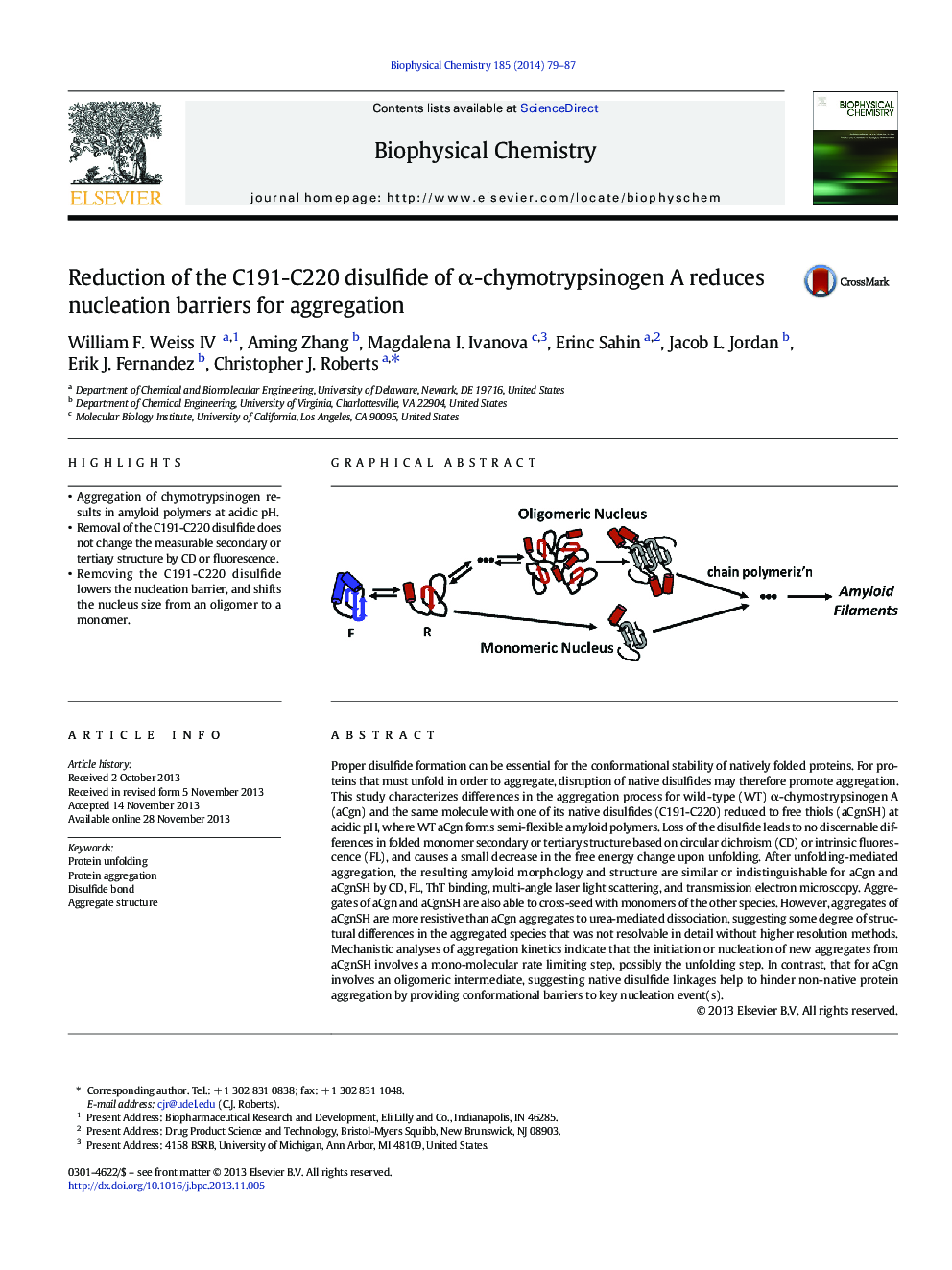| کد مقاله | کد نشریه | سال انتشار | مقاله انگلیسی | نسخه تمام متن |
|---|---|---|---|---|
| 5371072 | 1503929 | 2014 | 9 صفحه PDF | دانلود رایگان |

- Aggregation of chymotrypsinogen results in amyloid polymers at acidic pH.
- Removal of the C191-C220 disulfide does not change the measurable secondary or tertiary structure by CD or fluorescence.
- Removing the C191-C220 disulfide lowers the nucleation barrier, and shifts the nucleus size from an oligomer to a monomer.
Proper disulfide formation can be essential for the conformational stability of natively folded proteins. For proteins that must unfold in order to aggregate, disruption of native disulfides may therefore promote aggregation. This study characterizes differences in the aggregation process for wild-type (WT) α-chymostrypsinogen A (aCgn) and the same molecule with one of its native disulfides (C191-C220) reduced to free thiols (aCgnSH) at acidic pH, where WT aCgn forms semi-flexible amyloid polymers. Loss of the disulfide leads to no discernable differences in folded monomer secondary or tertiary structure based on circular dichroism (CD) or intrinsic fluorescence (FL), and causes a small decrease in the free energy change upon unfolding. After unfolding-mediated aggregation, the resulting amyloid morphology and structure are similar or indistinguishable for aCgn and aCgnSH by CD, FL, ThT binding, multi-angle laser light scattering, and transmission electron microscopy. Aggregates of aCgn and aCgnSH are also able to cross-seed with monomers of the other species. However, aggregates of aCgnSH are more resistive than aCgn aggregates to urea-mediated dissociation, suggesting some degree of structural differences in the aggregated species that was not resolvable in detail without higher resolution methods. Mechanistic analyses of aggregation kinetics indicate that the initiation or nucleation of new aggregates from aCgnSH involves a mono-molecular rate limiting step, possibly the unfolding step. In contrast, that for aCgn involves an oligomeric intermediate, suggesting native disulfide linkages help to hinder non-native protein aggregation by providing conformational barriers to key nucleation event(s).
Journal: Biophysical Chemistry - Volume 185, January 2014, Pages 79-87